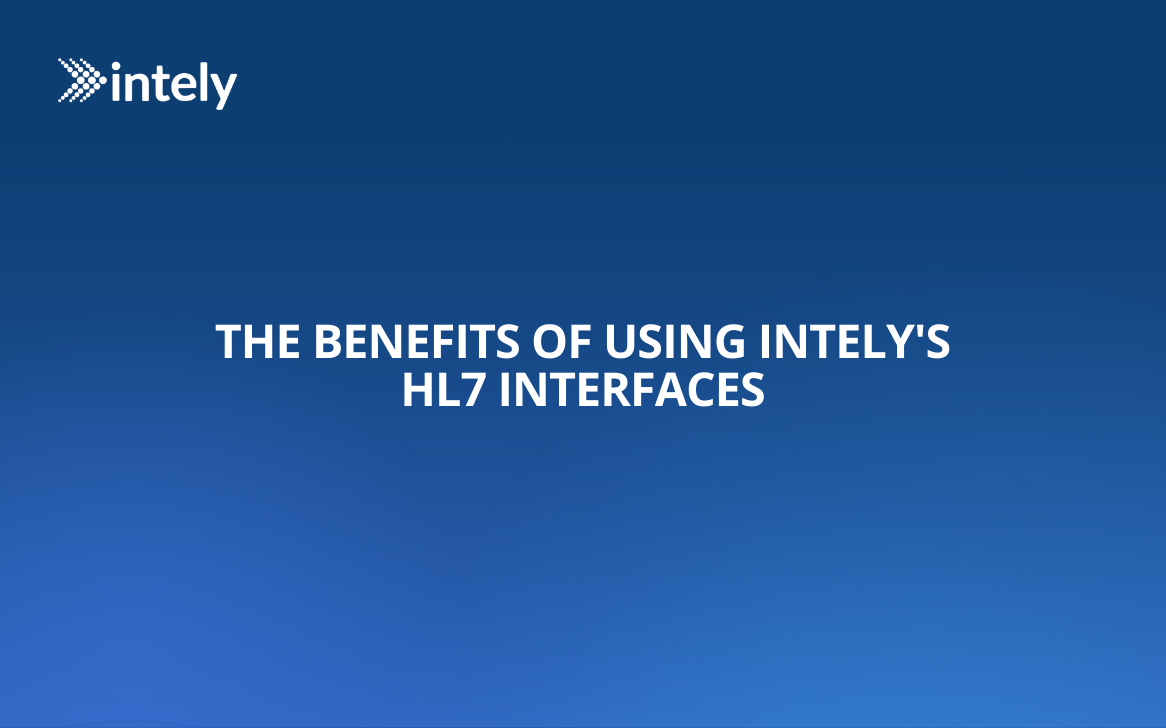What’s New with intely: May Roundup
Here are the highlights of all the content we have posted in the past month. We hope this will give you a sense of what intely is all about, and you'll feel…
Over the past decade, healthcare has undergone a secular shift. Technology has changed how care is initiated, delivered, and managed. Digitalizing medical…
.png)

Over the past decade, healthcare has undergone a secular shift. Technology has changed how care is initiated, delivered, and managed. Digitalizing medical records created an environment that was ripe with possibilities to innovate.
Patients want to own their healthcare experience and journey. Today's environment requires healthcare organizations and providers to use new technology applications to deliver the care and outcomes their patient’s desire.
The healthcare market today needs to be connected and tightly integrated. When selecting products and solutions, organizations and providers require the applications they use to integrate and share data.
Health Level Seven (HL7) is the most common international standard for transferring and sharing healthcare data between providers and technology systems. HL7 is broad and is appropriate for many use cases. Many other healthcare data standards exist but are generally more specialized and apply to more nuanced or specific workflows.
In a previous blog, we reviewed the history and different versions of HL7. HL7 standards are likely here to stay and will serve as a reliable method to set up interfaces between technology applications in healthcare.
HL7 interfaces are connections between two systems that enable sharing of healthcare data. Through an interface, systems can send and receive information and data in a standardized way and can provide several benefits, including:
The Intely Platform is a no-code healthcare data interoperability platform. We make the infrastructure to seamlessly integrate with any EHR, business application, and healthcare solution readily available for innovators. With pre-built connectors, data standardization, and composable workflows, we handle the heavy lifting and complexity and simplify healthcare interoperability.
Intely supports out-of-the-box interfaces for various HL7 standards such as HL7 v2, C-CDA, and FHIR, making it easy for customers to connect to the systems their users and customers want. Our platform can convert between various formats to ensure interoperability.
HL7 interfaces, especially when configured in the Intely Platform, provide a method and opportunity for healthcare products and applications to improve their value delivery. A provider uses a wide range of applications in their daily workflow, and there are generally multiple applications to choose from for a given use case or modality.
An integrated solution that communicates with the Electronic Medical Record (EMR) system and across the broader technology stack can stand out and be a competitive edge. EHR integration and data interoperability can help drive user adoption and improve the value technology brings to the healthcare domain.
HL7 (Health Level Seven) is an international standard for transferring and sharing healthcare data between providers and technology systems. It facilitates interoperability by standardizing how healthcare information is exchanged, making it a widely used and reliable method for setting up interfaces in healthcare.
HL7 interfaces offer several benefits:
The Intely Platform is a no-code healthcare data interoperability platform designed to simplify healthcare interoperability. It supports various HL7 standards (e.g., HL7 v2, C-CDA, FHIR) with pre-built connectors, data standardization, and composable workflows. Intely handles the complexity of data integration, making it easy for customers to connect to the systems they need.
The Intely Platform supports multiple HL7 standards, including:
HL7 integration provides significant benefits, including:
Interoperability is essential because it ensures that healthcare applications can share and access data seamlessly. This connectivity improves patient care, operational efficiency, and overall outcomes by providing comprehensive and timely information across different systems and applications.
The Intely Platform simplifies interoperability by providing a no-code solution with pre-built connectors and standardized workflows. Innovators can easily integrate with EHRs, business applications, and other healthcare solutions without handling the technical complexities of data integration.